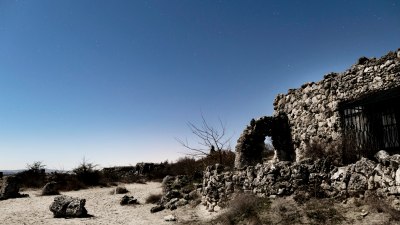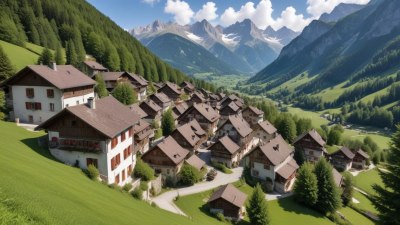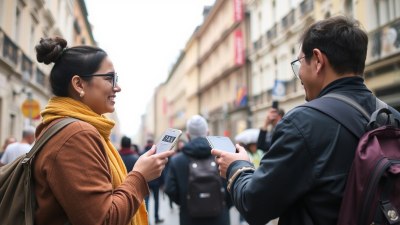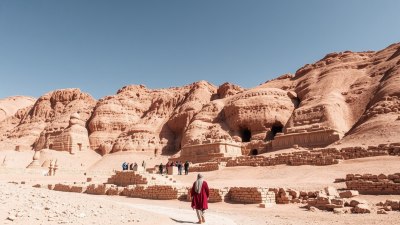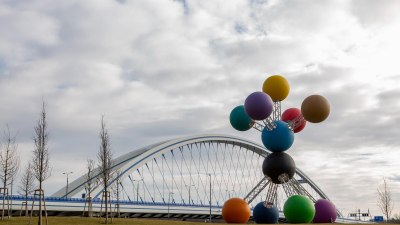The Khaju Bridge in Iran Speaks Best When the River Is Silent
Discover the beauty and history of Khaju Bridge in Iran, a silent witness to time and tradition.
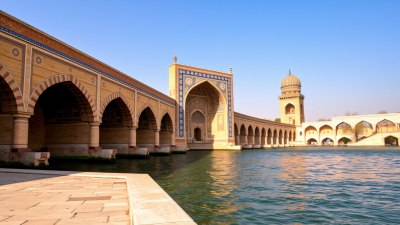
The Khaju Bridge, known in Persian as Pol-e Khaju, is one of the most remarkable architectural marvels in Iran, standing gracefully over the Zayandeh River in Isfahan. Constructed during the Safavid era in the 17th century, this stunning bridge serves both a functional and aesthetic purpose, representing the pinnacle of Persian architecture. To truly appreciate its beauty and significance, one must visit the Khaju Bridge during the tranquil moments when the river flows silently beneath its arches.
As you approach the bridge, the intricate tile work and elegant arches beckon you closer. The Khaju Bridge isn't just a means of crossing a river; it is a symbol of the harmony between nature and human ingenuity. The design showcases the ingenuity of Persian architects, who seamlessly blended form and function, creating an enduring structure that has stood the test of time. The bridge is 133 meters long and 12 meters wide, featuring 23 arches that add to its aesthetic appeal.
Built by Shah Abbas II, the Khaju Bridge embodies the historical significance of Isfahan as the political and cultural capital of the Safavid dynasty. The bridge contains a grand pavilion where the Shah would hold court, surrounded by the beauty of the flowing Zayandeh River. Today, this iconic bridge still serves as a favorite gathering spot for both locals and visitors, offering a serene escape from the bustling city.
Architectural Features
The design of the Khaju Bridge exemplifies the architectural prowess of the Safavid period. The use of traditional Persian elements like arched openings, ornate tile work, and intricate stucco designs reflects the rich artistic heritage of Iran. The bridge is composed of two stories; the lower level was designed for horse-drawn carts, while the upper level adorned with beautiful balconies provided a place for people to gather and admire the river views.
Decorative motifs can be seen throughout the bridge, including floral patterns and geometric shapes that capture the essence of Persian artistry. The bridge's columns and arches are adorned with colorful tiles that glow under the sunlight, providing a feast for the eyes. The careful attention to detail in the construction is a testament to the skilled artisans who labored to create this masterpiece.
Historical Significance
The Khaju Bridge was built around 1650, during a period of cultural revival in Isfahan. It was not merely a bridge; it served as a crucial infrastructure element, facilitating trade and transportation while also serving as a public space for social interaction. The bridge played a vital role in the life of the city, connecting the northern and southern districts and encouraging economic activity.
Over the centuries, the Khaju Bridge has witnessed many significant historical events. From the flourishing arts and culture during the Safavid era to the political upheavals of later centuries, the bridge stands as a silent observer of the city’s changing fortunes. Its enduring presence symbolizes the resilience of Persian culture against the backdrop of history.
Enchanting Views
The best time to appreciate the Khaju Bridge is during the early morning or late afternoon when the sun casts a golden hue on its structure. The reflections on the tranquil waters of the Zayandeh River amplify the beauty of the bridge, creating a picturesque scene that photographers and artists have long sought to capture. As the sun sets, the bridge takes on a magical glow, inviting visitors to pause and absorb the serene atmosphere.
Standing on the bridge, one can enjoy breathtaking views of the Zayandeh River, which winds its way through the landscape. The sound of the water flowing silently beneath the arches adds to the tranquil ambiance. The bridge itself acts as a vantage point from where one can appreciate the surrounding vistas, with distant mountains providing a stunning backdrop to the scene.
Spiritual Connection
The Khaju Bridge has also been a site of spiritual significance. Many locals believe that walking across the bridge during quiet moments strengthens one's connection to the divine. The peaceful ambiance invites reflection and contemplation, and visitors often sit on the bridge, taking in the beauty of their surroundings while engaging in deep thought and prayer.
During the Persian New Year, known as Nowruz, the bridge becomes a hub of activity as families gather to celebrate. Traditional music, dancing, and picnicking take place along the banks of the river, fostering a sense of community and connection to the past. For many, the Khaju Bridge serves as a bridge not only between physical spaces but also between generations, linking the present with history.
Preservation Efforts
Community involvement is crucial in these efforts, as locals take pride in their historical heritage and actively participate in maintaining the bridge. Educational programs and heritage awareness campaigns are essential to instill a sense of responsibility among younger generations, encouraging them to cherish and protect their cultural landmarks.
A Gathering Place for Culture
The Khaju Bridge is more than just an architectural marvel; it is a cultural hub where art, music, and history converge. Throughout the year, various cultural events are held near the bridge, celebrating Persian traditions through performances, art exhibitions, and storytelling sessions. The atmosphere is vibrant, filled with laughter and music that resonates against the backdrop of the historic structure.
Local craftsmen and artists often set up stalls near the bridge, showcasing their creations and offering visitors a taste of authentic Persian culture. The pedestrian walkways become a vibrant marketplace, where the sounds of bargaining and the aromas of local cuisine waft through the air, inviting people to partake in the rich culinary heritage of the region.
A Timeless Legacy
The Khaju Bridge stands as a testament to the ingenuity and artistry of Persian architecture, capturing the hearts of anyone who crosses its path. As the river flows silently beneath it, the bridge serves as a reminder of the enduring connection between humanity and nature, a theme that resonates deeply within Persian culture.
Visiting the Khaju Bridge is not merely an exploration of a historical site; it is a journey into the heart of Iran's rich cultural tapestry. As one walks across its majestic arches, they become part of the ongoing story that the bridge has narrated for centuries. The silent witness to countless moments of joy, sorrow, and reflection, the Khaju Bridge continues to inspire all who experience its beauty and significance.
In conclusion, the Khaju Bridge in Iran speaks best when the river is silent. This beautiful structure, with its intricate architecture and rich history, invites visitors to pause, reflect, and connect with the past. As Iran continues to embrace modernity, the Khaju Bridge stands resilient, a beautiful reminder of the artistry and cultural heritage that define this magnificent nation. Whether you are an avid historian, a curious traveler, or simply someone seeking solace by the water, the Khaju Bridge promises an unforgettable experience that will linger in your heart long after you leave its enchanting embrace.


